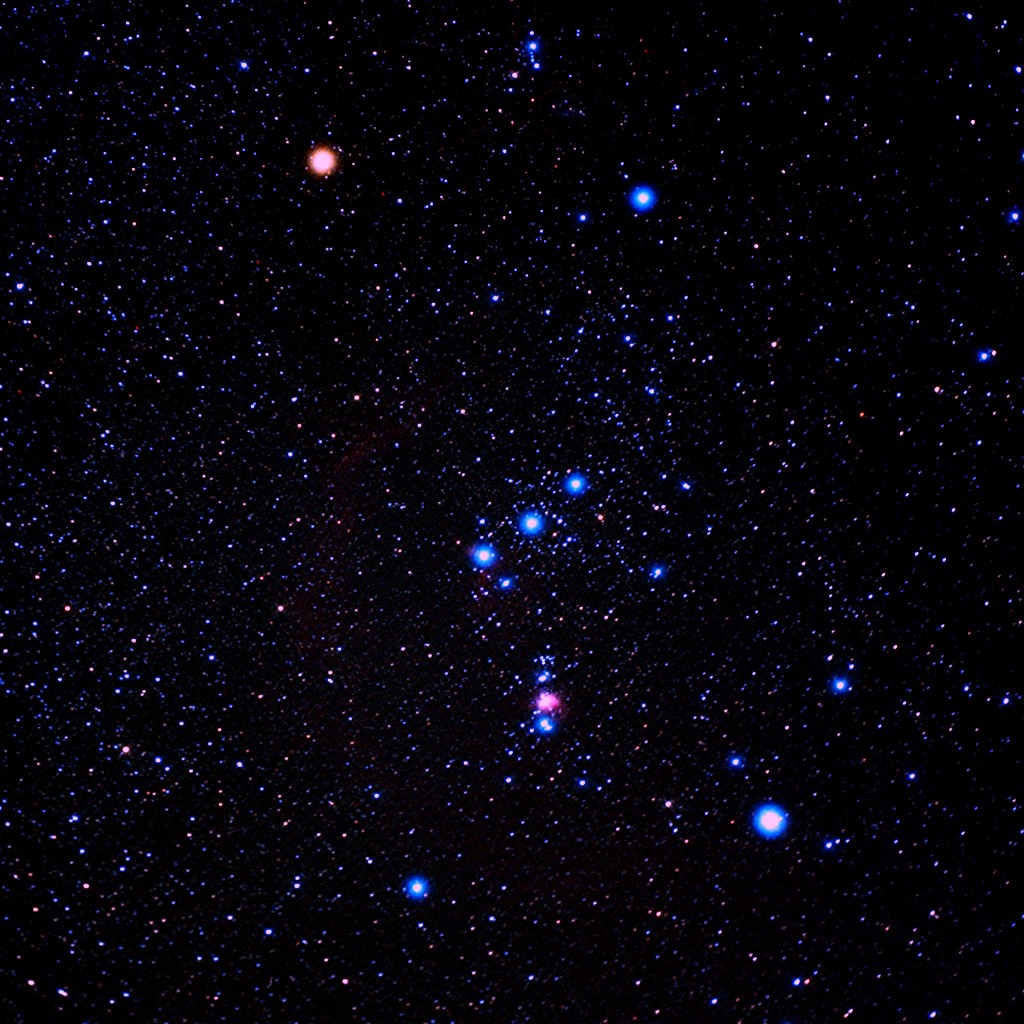Friday, January 22nd:
Aldebaran shines to the lower left of the waxing gibbous Moon. Look to the upper left of the Moon and you may be able to find the Pleiades despite the moonlight.
Saturday, January 23rd:
Aldebaran is now directly below the Moon, and the Pleiades appears further to the upper right of the Moon. Orion can be found far beneath these objects.
Sunday, January 24th:
The waxing gibbous Moon enters the horn tips of the constellation Taurus.
Monday, January 25th:
Orion is at its tallest in the south sky by 9pm.
Tuesday, January 26th:
Castor and Pollux can be spotted to the left of the Moon- now entering the middle of Gemini- and Orion appears to climb up further into the sky.
Wednesday, January 27th:
Castor and Pollux now can be found above the Moon (which is nearly full). To the Moon’s lower right is Procyon, also known as the Little Dog Star in the constellation Canis Minor, and to Procyon’s lower right is Sirius, the Big Dog Star, in the constellation Canis Major.
Thursday, January 28th:
The Full Moon is upon us, reaching its peak at exactly 2:16 p.m. EST above the late-rising star Regulus in North America. Bright stars Capella and Rigel reach nearly the same right ascension- the celestial equivalent of longitude, meaning that they cross your sky’s meridian- the line on the celestial sphere that joins the observer’s zenith (direct overhead view) with the north and south celestial poles- at almost the same time (around 8 p.m. or 9 p.m.). Therefore, whenever Capella hits its highest point, Rigel always denotes true south, and vice versa.
SOURCE: Sky and Telescope


